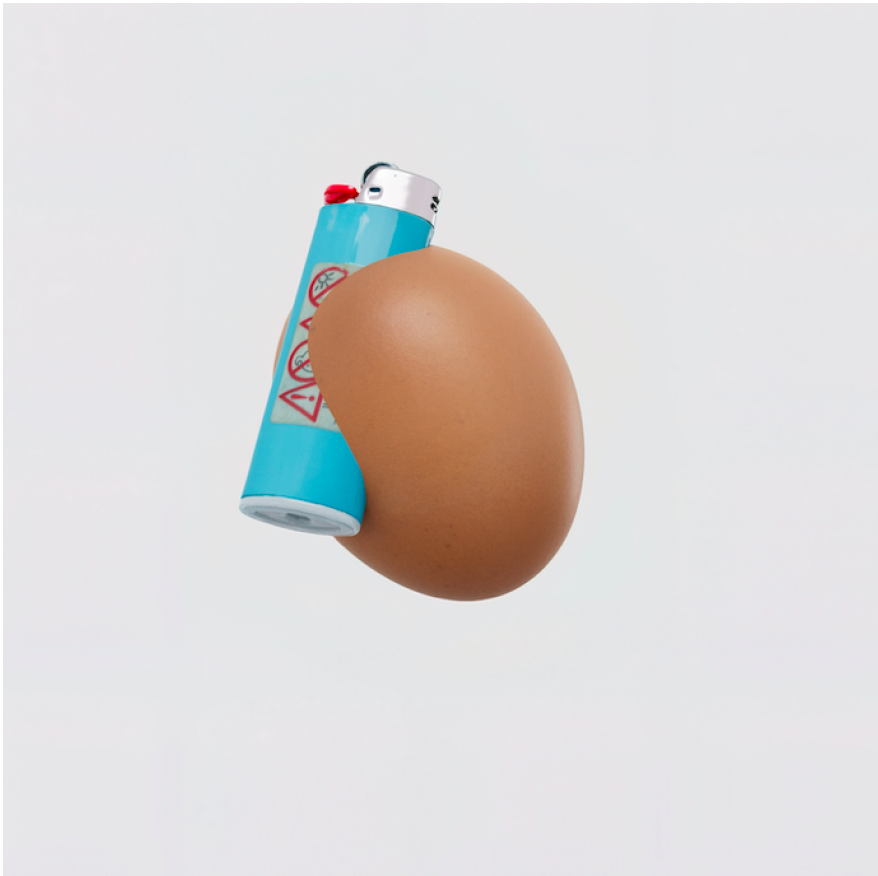Market
Urs Fischer’s First NFT, Which Created Tension With His Longtime Dealer Gagosian, Sold for Nearly 100 Times Its Estimate on the Fair Warning App
Gouzer admits the learning curve for the platform's first-ever NFT auction was steep.

Gouzer admits the learning curve for the platform's first-ever NFT auction was steep.

Eileen Kinsella

A non-fungible-token (NFT) by blue-chip artist Urs Fischer brought in $97,700 on the auction app Fair Warning on Sunday, marking the artist’s first foray into a medium that has thoroughly disrupted the art market in a matter of weeks. (Imagine reading that sentence a year ago—you would have no idea what we were talking about!)
The sale of Fischer’s first-ever NFT—a unique digital token encrypted with the artist’s signature and individually identified on a blockchain—marks the first offering from CHAOS, a new body of work that comprises 501 individual NFTs. CHAOS #1 Human, an animation based on a 3D-scan of a lighter encircling an egg, had a starting bid of $1,000, but soared up to almost $100,000.
Fischer’s endeavor gained headlines last week when the Wall Street Journal reported that the project had frayed his relationship with his longtime gallery, Gagosian, and sent him into the eager arms of NFT-friendly mega-gallery Pace. Larry Gagosian told the newspaper he wasn’t ready to offer Fischer’s NFTs because he needed more time to explore the concept and hadn’t had enough advance notice about the Fair Warning auction. (Gagosian didn’t immediately respond to Artnet News’s request for comment.)
Around 100 people registered and 30 competed during Sunday’s sale, according to Gouzer. It remains unclear just how much the traditional art-collecting audience overlaps with the NFT audience: Gouzer says he had received hundreds of new applications for the app, which requires approval to download, in the days since the sale was announced last week. Around 70 percent of the bidders were first-timers. (“We’re open to everyone but closed to assholes,” Gouzer quips.)
The price for Fischer’s NFT, while significant, also pales in comparison to the priciest NFTs sold, which are by names that are far less familiar to the mainstream art market. Gouzer declined to comment as to whether the buyer paid in cryptocurrency or traditional currency.
.@CHAOSursfischer first NFT just sold for $98k via Fair Warning & @GouzerLoic pic.twitter.com/uIe8uejylr
— Kelly Crow (@KellyCrowWSJ) April 11, 2021
While most NFT transactions take place on the blockchain, this one was held off the blockchain and on the app, meaning the buyer must complete an invoice and pay up before ownership is transferred. (Some purists dispute whether off-chain transactions actually qualify as NFTs.)
The subsequent Fischer NFT sales, which are being conducted via the MakersPlace platform (several are dropping today) and then by Pace Gallery in mid-May, will be on the blockchain. MakersPlace does not set reserve prices and Pace will determine minimum reserves for the NFTs it offers.
“I haven’t felt so much energy since the YBAs,” Gouzer says, a reference to the wildly popular Young British Artists, like Damien Hirst and Tracey Emin, who rose to worldwide prominence in the 1990s. “There is this whole world that we didn’t know. And there is an appetite for art that is huge, by people who don’t necessarily feel welcome in galleries.”
Gouzer says the $98,000 price achieved yesterday may not be replicated in subsequent sales given the novelty of the first drop. He had mixed feelings about watching this one soar so high. “I was very happy it was a strong price, but secretly I hoped for a bit less because I want this to be as democratic as it can be for as long as possible,” he says. Proceeds from the sale benefit ocean-preservation nonprofit Oceana.
Fischer did not immediately respond to Artnet News’s request for comment, but Gouzer says he’s over the moon about working in this new realm. “Urs says he’s in love again because this allows him and other artists not only to express themselves and their ideas, but it’s also a whole community aspect that he is discovering and interacting with through Discord,” a platform for creatives.
The fact that star artists are breaking free of their galleries in order to mint and capitalize on NFTs is getting a mixed reaction from establishment dealers. Gouzer admits that the learning curve is steep, calling the process of selling an NFT on his platform “a lesson in humility.” But he firmly believes that the new sector will be game-changer.
“Simply because the crowd is so big and it likes art so much,” he says, “you won’t be able to stop curious people who can also afford it.”